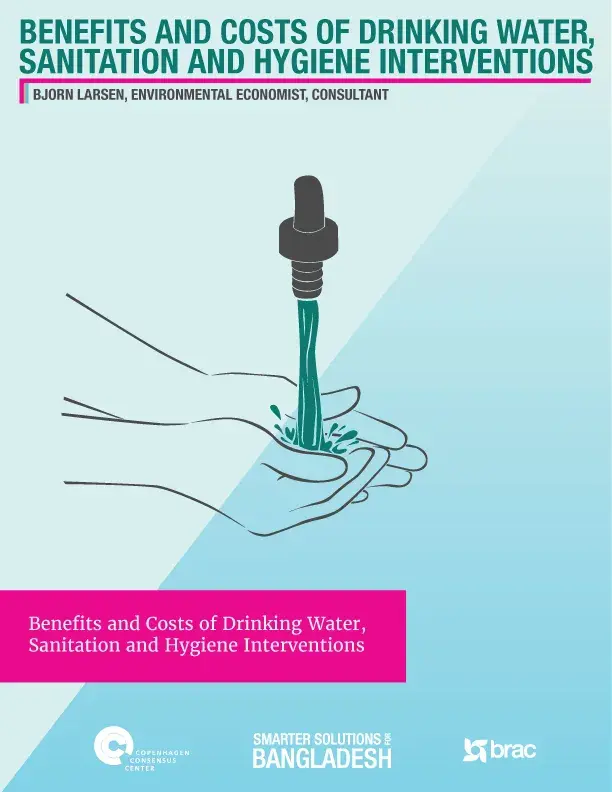Water and Sanitation
Even though 98 percent of Bangladeshis have access to either a well or piped water, 25 percent of households’ water sources contain arsenic levels that exceed the World Health Organization guideline. Research investigates three water supply options that can limit arsenic exposure: deep tubewells, rainwater harvesting, or pond sand filters. These options would cost each affected household between Tk 1,250-1,850 annually and avert virtually all deaths related to arsenic, doing about 7 takas of good per taka spent. Focusing efforts on the 20 percent worst affected, however, can do even more good—up to 17 takas in benefits for each taka spent.
| Strategy | Takas of benefits per taka spent |
|---|---|
| Treat arsenic for 20% worst affected | 17 |
| Treat arsenic for all affected | 7 |
| Sanitation | 2 |
| Hand-washing promotion | 1.2 |
Benefits and Costs of Drinking Water, Sanitation and Hygiene Interventions
New research by Bjorn Larsen, Environmental Economist, investigates three water supply options that can limit arsenic exposure: deep tubewells, rainwater harvesting, or pond sand filters.
As many as 98% of the population in Bangladesh have access to an improved drinking water source. This is a tremendous achievement at Bangladesh’s income level. It was, however, discovered that many of the tubewells were contaminated by arsenic."
- Bjorn Larsen

What's the smartest solution for Bangladesh?
Limiting exposure to arsenic through drinking water seems a worthy investment, but is it the smartest solution for Bangladesh? After reviewing 1,000s of pages of peer-reviewed research an Eminent Panel ranked 72 solutions from the best to the worst in terms of delivering the most social, economic and environmental value for money. Find out what they ranked the highest here.


